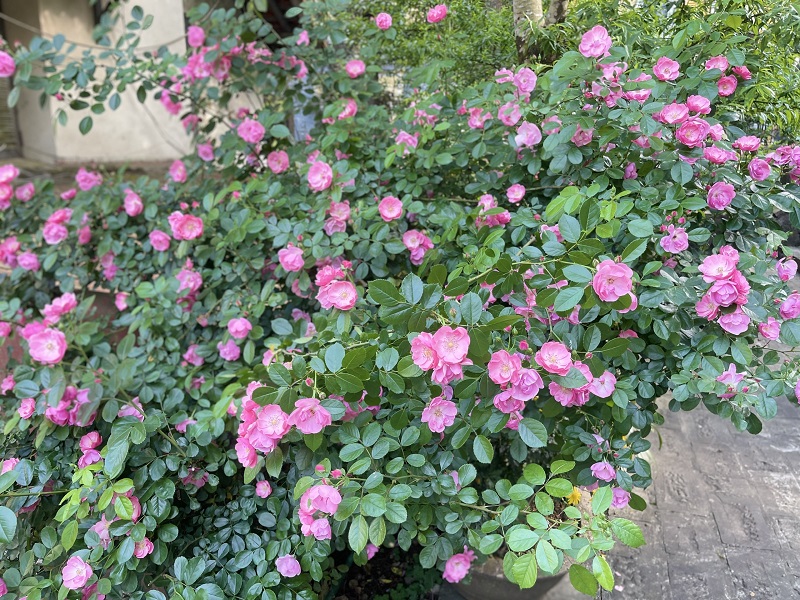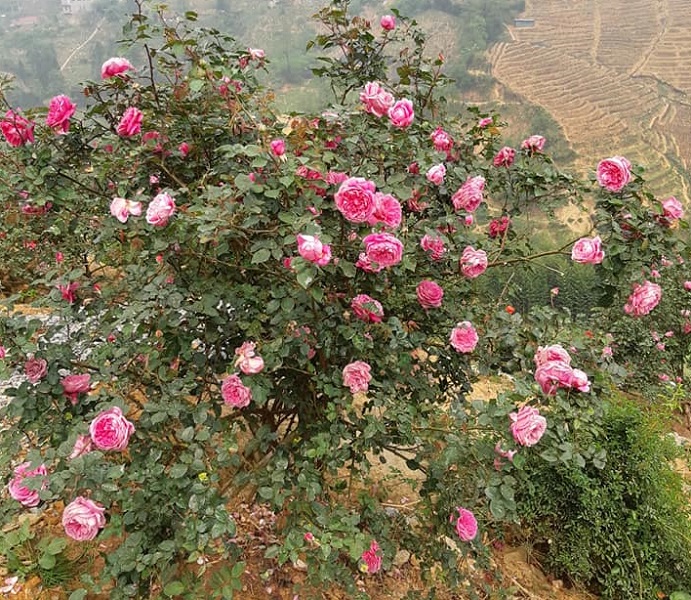- You are here:
- Home »
- The Attractions in Sapa »
- Rose Flower Season in Sapa: A Beautiful Bloom of Nature

Rose Flower Season in Sapa: A Beautiful Bloom of Nature
While the region is famous for its seasonal flowers such as peach blossoms and chrysanthemums, the rose flower season is emerging as a captivating attraction for travelers and photography enthusiasts.
The blooming period of roses in Sapa typically occurs from late spring to early summer, offering a delightful spectacle of colors and fragrances that transform the landscape into a picturesque paradise.

Timing of the Rose Flower Season in Sapa
The best time to witness the enchanting rose season in Sapa is from late May to early July. This period coincides with the warmer months in the region, leading to favorable conditions for roses to bloom. During this time, the weather remains relatively mild, with the daytime temperatures ranging from 15°C to 25°C (59°F to 77°F), creating ideal conditions for the flowers to flourish. The prolonged daylight hours and gentle rainfall in early summer further help roses develop their full bloom, filling gardens and slopes with vibrant hues and a sweet, intoxicating scent.
While roses can be found blooming at other times of the year, their peak beauty and abundance are most prominent during these months. Visitors planning to enjoy the full spectacle of rose gardens should aim for late spring, when the landscape bursts into color and the air is filled with floral aroma.

Prime Locations to Capture the Beauty of Roses
Sapa offers numerous scenic spots perfect for appreciating and photographing roses, from well-maintained gardens to rustic hillside slopes. Some notable locations include:
Ham Rong Mountain: Often called the “Garden of Roses,” Ham Rong Mountain is famous for its beautifully landscaped gardens, where hundreds of rose varieties bloom majestically. The pathway through the gardens offers stunning views of Sapa town and Fansipan Mountain in the background. Photographers can capture close-up shots of delicate petals or panoramic images of the lush rose-covered slopes.
Sapa Valley and Terraces: The terraced rice fields and surrounding valleys are interwoven with paths lined by wild and cultivated roses. Early mornings and late afternoons provide the best lighting, with soft sunlight enhancing the petal colors and creating dreamy visuals.
Local Ethnic Villages: Visiting villages like Cat Cat, Ta Van, or Lao Chai during the rose season allows travelers to combine cultural exploration with scenic photography. The rustic charm of these villages, framed by blooming roses along trails and gardens, offers authentic and captivating photo opportunities.
Fansipan Mountain: As the highest peak in Vietnam, Fansipan offers sweeping views of the region, especially during the rose bloom season. While roses may not be the dominant flora at the summit, the surrounding areas and the cable car journey provide beautiful vantage points for photography.

Types of Rose Flowers in Sapa
While Sapa is not traditionally known for native rose species, the area has seen the cultivation of various cultivated roses, often imported from other regions for their ornamental value. The most common types include:
- Hybrid Tea Roses: Known for their large, high-centered blooms, these roses come in an array of colors including red, pink, yellow, and white. Their long stems make them ideal for floral arrangements and close-up photography.
- Floribunda Roses: This variety produces clusters of smaller flowers on each stem, offering a burst of color. They are often planted along pathways and in garden beds within Sapa’s resorts and homestays.
- Climbing Roses: These roses grow vertically, climbing on trellises and fences. Their sprawling blooms add drama to valley views and garden landscapes.
- Old Garden Roses: Some traditional and heirloom varieties are also cultivated, showcasing fragrant blooms with a nostalgic charm.
Cultivators in Sapa might also experiment with ornamental roses to enhance the aesthetics of local gardens and tourism spots, adding diversity and color to the floral landscape.

Conclusion
The rose flower season in Sapa, though relatively short, offers a mesmerizing experience for visitors. The best viewing period from late May to early July coincides with favorable weather and the region’s scenic beauty, providing abundant opportunities for outdoor photography. Whether exploring the landscaped gardens on Ham Rong Mountain, wandering through terraced fields, or capturing the rustic charm of local villages, visitors can enjoy the vibrant colors and sweet fragrances of roses.
As Sapa continues to develop its floral and ecological attractions, the rose season promises to become an even more prominent feature of its natural allure. Travelers who appreciate natural beauty, photography, and serene mountain landscapes will find the rose bloom in Sapa an unforgettable experience — a moment of blossoming beauty amidst the enchanting hills and valleys of Vietnam’s northern frontier.
Thanh Tuan
About the Author Sapa Tourism Office
Popular posts

